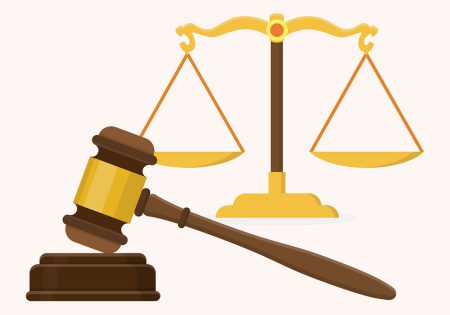Differentiation Hinges on Tech and Other Value-Adds
“I’m expecting differentiation in the coming years that will see leading plan provider Internet sites become highly responsive and customizable for the individual participant,” says Gary Josephs, managing principal at Retirement Benefits Group.
Josephs tells PLANSPONSOR that significant industry attention is fixed on the notion of creating “a holistic eMoney overlay right inside the plan portal that says, here is your net worth; here is your gap analysis and the next steps for closing it; here is your retirement savings portfolio and asset allocation; here is anticipated Social Security and home equity or inheritance wealth. One day all of it will be tied together in the standard offering.”
Josephs says participants have already benefitted strongly from digital innovation at retirement plan providers, and that it’s not hard to picture what the client service portal of the future could look like. He believes providers will eventually create a digital plan experience for participants similar to that of today’s iPhone or iPad user.
“You’ll be able to drag and drop different applications and tools that you want to see on your retirement plan portal homepage, for example, and to hide the things that aren’t as relevant,” Josephs explains. “Retirement plan investors each have different needs in terms of education, portfolio support, and so on. Our expectation is that the provider technology will grow to meet the demand for convenience and ease of use.”
Of course, client-facing technology innovation will have to be supported by back office investment and IT administration. Josephs expects multiple operating models to continue in this area—some providers opt to invest and create their own systems, while others depend on technology partnerships or licensing agreements to get the job done with external expertise. Less important than having either a proprietary or outsourced technology system is having a nimble system, he notes.
“There is one provider out there that has a more internal, home-server based system to which they can make changes a lot quicker than others, and it’s being turned into an advantage,” Josephs says. “They are not in this big batch format that requires a long time to make changes to the client facing portal. Changes can be rolled out widely or narrowly for different sets of clients, and in real time. I can see more and more of that going on in the future.”
Bob Guillocheau, CEO of Ascensus, also feels we are at the front end of promising technology trends that are reshaping features of the retirement plan services marketplace. He says advisers and plan recordkeeping providers are gaining powerful tools that give sponsor clients unprecedented insight into the inner workings of their employee benefits packages.
As Guillocheau explains, Ascensus delivers services to retirement plans through a network of advisers, some longtime retirement specialists and some new entrants into the plan environment. Whether a given adviser is serving one plan sponsor or many, Guillocheau says it’s key to be armed with the right data and reporting. “For us, this need is served by the Plan Illustrator,” he explains.
The illustrator tool is an automated report that goes out quarterly to the plan adviser network. Each adviser gets talking points and important pieces of data presented as a plan health check, to be delivered to the sponsor in an easily approached form.
“This health check pulls together highlights from the recordkeeping data, all the fund performance and relevant market data, as well as demographic information on things like participant risk outlook and age—all the stuff the sponsor and adviser want to discuss at the regular meetings of the 401(k) committee,” Guillocheau says, adding that technology innovation of this kind makes it easier for advisers to present themselves as “retirement specialists.”
“We have all seen the industry research showing how more plan sponsors are seeking retirement plan specialists,” he continues. “The advisers that are most effective today are very fluent in plan design, and they can speak broadly about the benefit that an employer is trying to bring to its employees. Sponsors are waking up to the fact that the plan design is critically important, just as important as the investment lineup in a lot of ways. The specialization trend is very big.”
Josephs shares that sentiment, adding that high performing retirement specialists see themselves as more than just plan optimization consultants.
“What I’ve seen in the past was that an advice or consulting provider came in, did the plan optimization study, presented it, and then it immediately went away,” Josephs says. “More and more I believe we are going to see lasting, dedicated [Employee Retirement Income Security Act] consulting that is much more of an ongoing partnership. Advisers will be asked to commit to coming back in, say, every year or six months to provide additional consulting and optimization for the plan.”
Guillocheau says the increasing competitiveness of the retirement plan services marketplace will accelerate this trend. He predicts there will also be increasing pressure on traditional compensation arrangements tied to sales commissions from investment fund companies. As advisers and sponsors lengthen and deepen their relationships, more will rely on flat fees that encompass more than just the investment lineup and portfolio services.
“Along with all this comes a shift in the amount of plans being sold today where the pricing is asset based,” he says. “We expect more arrangements where the adviser’s compensation is an arms-length transaction with the plan sponsor, and it’s not necessarily going to be tied to assets or commissions from the investment fund companies. You will see a lot more low-cost institutional share classes being deployed as well, because the advisers are being called on to talk about the total cost of ownership of the retirement plan in a way that is a lot more transparent than it has been in the past.”
You Might Also Like:

Why Small 401(k) Plans Should Remain Wary of Hidden Fees

ERISA Complaint Against AT&T Returned for Review by Appeals Court
